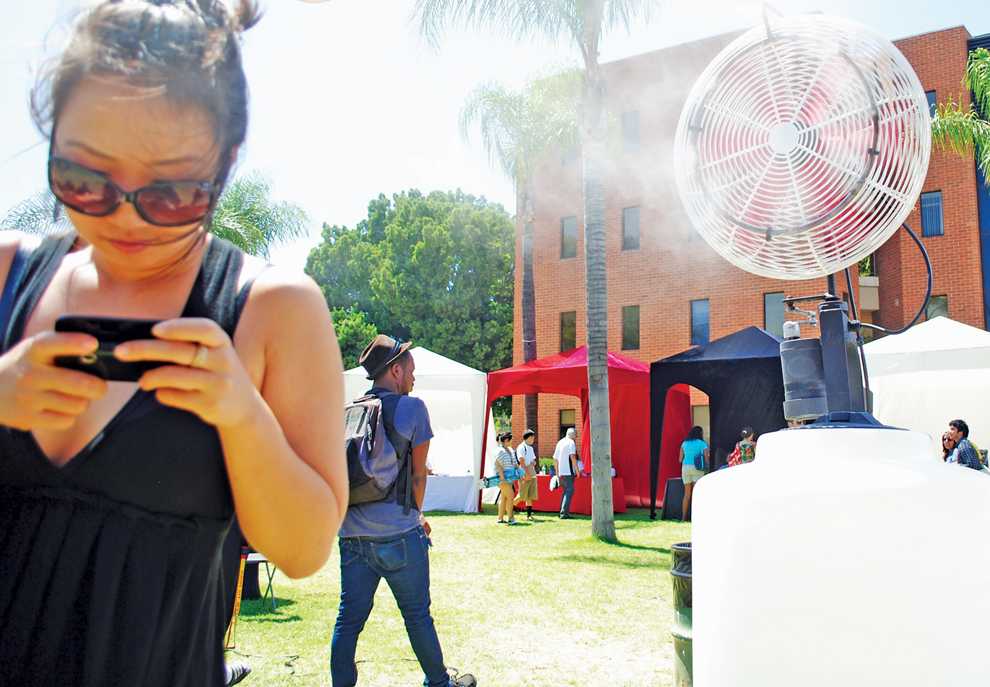
CSUN students were met with 100 degree temperatures and plenty of sunshine on their first day of the semester, and the next few months will likely bring more of the same to make up for an unusually cool summer.
“The forecast is above normal temperatures for this month, so we may have a little bit of a warmer September and October, because we were below average for June and July,” said Dr. Helen Cox, director of the Institute of Sustainability.
Summer in Southern California was not as sweltering as usual, but worldwide 2010 was the hottest year on record, said David Klein, mathemathics professor.
Students have noticed the unusual weather patterns.
“One day its super hot and then another day normal,” said Jesus Delgado, a computer engineer major. “Last year felt cooler and this year its a lot hotter and humid.”
Local weather is largely controlled by El Nino, but there was a shift from a little La Nina into El Nino, said Cox.
El Nino represents warmer sea surface temperatures, while La Nina is cooler, according to the National Oceanic and Atmospheric Administration (NOAA).
As winds blow from the east to west along the equator of the Pacific Ocean it pushes up water in the western part of the Pacific and creates deeper waters in the east. As cool water gets pulled up from below it replaces the warm water being blown west, according to NOAA.
The summer’s unusual weather pattern seems to be turning around, Cox said.
But climate changes are affecting the environment worldwide, Klein said.
These factors can create natural disaster from low to high ranges on the point scale, such as recent events like hurricane Irene in the east coast, flooding in Mississippi and heat waves in Texas, Klein said.
To deal with the fluctuating local temperatures, students are advised to walk along the shade when ever possible, drink lots of water and stay indoors between classes to keep cool, he added.





